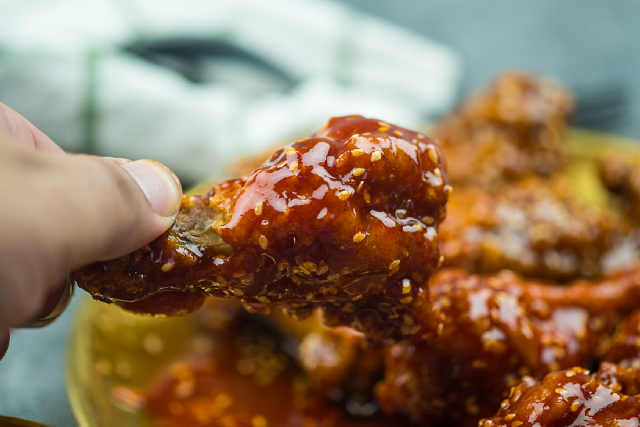South Korean cuisine is a rich and diverse blend of traditional and modern flavours, reflecting the country’s cultural heritage and rapid economic development in recent years. South Korean cuisine has something to offer everyone, from spicy stews and savoury pancakes to fried chicken and bubble tea.
A closer look
At the heart of South Korean cuisine is the concept of 한정식 “hanjeongsik,” a traditional Korean meal consisting of various small dishes. These dishes typically include rice, soup, and a range of side dishes such as kimchi, pickled vegetables, and grilled meat or fish. This communal eating style is meant to encourage socialising and sharing, reflecting the country’s emphasis on community and hospitality.
Kimchi (김치)
One of the most well-known traditional South Korean dishes is kimchi, a spicy fermented vegetable dish often served as a side dish or as a flavouring agent in other dishes. Kimchi is made by salting and fermenting vegetables, such as cabbage or radish, with various seasonings, including chilli powder, garlic, and ginger. The result is a spicy and flavourful dish that is not only delicious but also rich in probiotics and other beneficial nutrients.
Bulgogi (불고기)
Other traditional dishes include bulgogi, a marinated beef dish grilled over an open flame, and bibimbab, a rice bowl topped with a variety of vegetables, meat, and egg. Bulgogi is made by marinating thin slices of beef in a mixture of soy sauce, sugar, sesame oil, garlic, and other seasonings. The marinated beef is then grilled over an open flame, resulting in tender and tasty meat that is often served with rice and a variety of side dishes.
Bibimbab (비빔밥)
Bibimbab, on the other hand, is a rice bowl topped with many kinds of vegetables, meat, and egg. The dish is often eaten with a spicy condiment made from gochujang, a fermented chilli paste that is essential in Korean households.
Evolution of Korean food
In recent years, South Korean cuisine has also undergone a significant modernisation, with the rise of “fusion” cuisine and a focus on presentation and visual appeal. One example of this trend is Korean-style fried chicken, which has become a popular street food in South Korea and worldwide. Korean-style fried chicken is made by coating chicken in a mixture of flour, corn starch, and seasonings, then deep-frying it until crispy. The chicken is then coated in a sweet and spicy sauce made from gochujang, honey, and other seasonings.
Another example of modern South Korean cuisine is “Korean tacos,” which combine traditional Korean flavours with Mexican-style tacos. Korean tacos typically feature marinated meat, such as bulgogi or spicy pork, served in a corn tortilla and topped with a variety of Korean-style toppings, such as kimchi or pickled vegetables.
One of the most significant trends in modern South Korean cuisine is the rise of Korean-style fast food, including instant noodles, fried chicken, and street food. These foods are often highly addictive and popular among younger generations, who are increasingly seeking quick and convenient meal options.
Despite the modernisation of South Korean cuisine, traditional dishes and cooking methods remain highly valued. South Koreans take great pride in their culinary heritage, and many traditional dishes are still prepared in the same way as they were centuries ago. In fact, South Korea’s traditional food culture was recently designated as a UNESCO Intangible Cultural Heritage, reflecting the country’s commitment to preserving its culinary traditions.
Conclusion
South Korean cuisine is a fascinating blend of traditional and modern tastes, reflecting the country’s rich cultural heritage and its rapid economic development in recent years. This unique blend is why the cuisine is so popular in Korea and beyond.
If you’re looking to immerse yourself more in Korean culture and food, why not learn the language through Korean language courses at Sejong? We are staffed by dedicated tutors who teach an intensive curriculum that will have you picking up Korean in no time. Contact us today to learn more!


